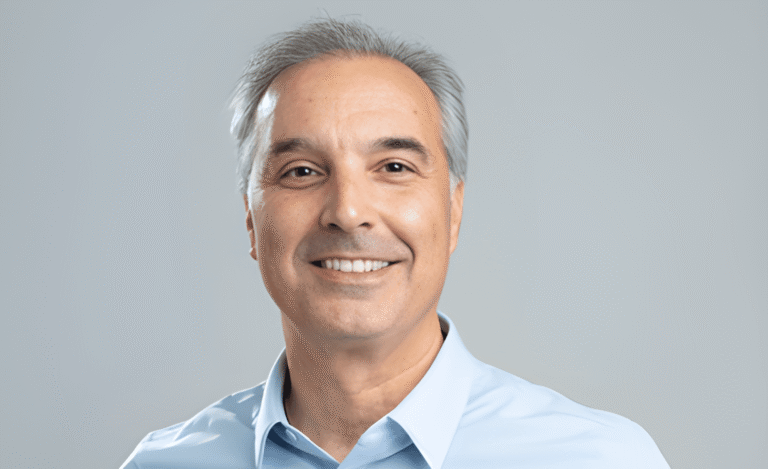- Global trade is shifting, and Europe is emerging as the new crossroads, says Mike Parra, CEO of DHL Express Europe, as the company pivots routes from Asia–US to booming Asia–Europe corridors using its agile “fixed-flex” air network.
- Nearshoring, friendshoring, and omni-shoring are reshaping supply chains, with nations like Hungary, Poland, and Turkey drawing record investment as DHL doubles down on operational flexibility and data-driven trade insights.
- Parra sees Europe’s strength in balancing speed with sustainability, with DHL rolling out electrified hubs, SAF-powered flights, and 100 percent green facilities—proving logistics can be fast, resilient, and climate-conscious at once.
Geopolitical uncertainty, shifting tariffs, and an evolving global economy are redrawing the world’s trade lanes. Nowhere is that more apparent than in Europe, where a wave of foreign investment and changing trade flows are repositioning the region at the centre of international commerce. According to Mike Parra, CEO of DHL Express Europe, these changes aren’t just affecting how goods move—they’re transforming the operational backbone of logistics itself.
“We are seeing a shift in the trade lanes,” Parra explained.China Hong Kong to the US has been our biggest trade lane. Now we are now seeing rising opportunities from Asia Pacific to Europe trade lanes.
This isn’t just a rerouting of packages—it’s a structural redirection of global commerce, driven in part by China’s growing economic outreach into regions like Latin America and Europe. In response, DHL Express has leveraged what Parra calls a “fixed-flex network,” with 54% of its dedicated air network fixed and 46% flexible—enabling the company to reposition aircraft and routes as demand shifts. “We’ve moved aircraft from China-Hong Kong to the US, over to China-Hong Kong to Europe,” he noted.
Parra also pointed to DHL’s “DHL’s Geographic Tailwinds initiative”—developed using its DHL Trade Atlas and Global Connectedness Report in partnership with NYU Stern—as an example of how the company has stayed ahead of the curve. “We basically took the top 20 countries that have potential to grow faster than GDP,” he said. “In Europe, that includes Czech Republic, Turkey, Hungary, Romania, and Poland where there are increasing signs of foreign direct investment.”
He explained how nearshoring, friendshoring and “omni-shoring”—once buzzwords—are now accelerating. “You can see a lot of EV companies are investing in Hungary. We’re starting to see the production that’s diversifying away from China into what could be a primary market for distribution for Europe.”
Parra believes flexibility is the key to navigating ongoing uncertainty. “We have the ability to flex down and stand down aircraft if we need to,” he said, citing the company’s recent decision to temporarily suspend service to Israel due to closed airspace. “Trade is like water coming down a hill. It’s looking for its lowest point… but trade will find its way.”
Balancing speed and sustainability
As express logistics continues to prioritize speed, sustainability has emerged as a parallel demand—especially in Europe, where regulatory pressure and consumer expectations are high. According to Parra, balancing the two is not a compromise, but a competitive advantage.
“Customers are asking for it,” he said. “And we, as a group—DHL Group—are not backing down on our sustainability commitments for 2030 on sustainable aviation fuel (SAF) and 2050 net-zero emissions.”
Sustainability is increasingly embedded into DHL’s service offerings. “We have a solid offering that provides customers with the comfort certificates that they could then use—especially as a public company—to file and share that they are working with a provider that is providing a sustainable product,” Parra noted. This includes electrification of vehicles on the road, SAF in the air, and energy-efficient buildings.
One recent example is DHL’s new facility in Lyon. “It’s 55% more sustainable than the building we were in before,” Parra said. “It’s predominantly 100% electrified inside—LED lighting, rapid doors that close, much more use of wood. Everything we’re doing now is putting on our sustainability hat and acting against it.”
This focus aligns with customer decisions as well. “There is a shift for customers making a decision on what provider they use—do they offer sustainability, are they truly committed, and are they showing proof?” Parra said. “And we are.”
European lessons from the Americas
Having previously led DHL Express in the Americas, Parra is now applying proven strategies to Europe, adapting them to the region’s unique dynamics. One of the most important, he says, is a mindset of “fit for growth”—an approach that emphasizes long-term efficiency over short-term cost-cutting.
“It’s active cost management,” he said. “It’s moving away from a short-term diet and into a healthier lifestyle. When you live a healthy lifestyle, your cost management happens all year long—and that’s something I brought from the Americas.”
Another transferable lesson is what Parra calls “sweating the assets.” “We’ve invested in Europe. We are built for growth,” he said. “But now it’s time to leverage that investment. Today, we’re not running our buildings at peak capacity, so we’ve got room for growth.”
That means optimizing intra-Europe trade lanes, growing outbound shipments from Europe to Asia Pacific, the Middle East, and Latin America, and leveraging DHL’s Madrid hub for enhanced Latin American connectivity. “It’s about Europe to Europe, Europe outbound, and using our existing infrastructure smartly—like our €121 million investment in Lyon,” Parra explained.
Operational agility is also key. “We’re looking to do more point-to-point,” he said. “We’re going Gateway to Gateway, Hub to Hub. We’re doing route optimization—taking down kilometers, improving efficiency, reducing carbon emissions.”
A cautious watch on the horizon
Despite persistent macroeconomic and geopolitical uncertainty, Parra sees significant opportunity in Europe. “The macroeconomic indicators like PMI Index are showing encouraging signs.”
Growth is particularly visible in emerging markets within Europe. “You’re really starting to see opportunities as a result of increasing foreign direct investment coming into Hungary, Poland, Czech Republic, Romania, and Turkey,” he added.
Yet the challenges are far from over. “The greatest hurdle is these long-lasting wars,” Parra admitted. “It brings volatility and uncertainty that’s not within any of our control.”
Still, he remains confident in logistics’ resilience. “We’ve been dealing with crises since 1969. Whether it’s the ash cloud, the ’08 crash, or wars—we work through them,” he said. “Our job is to keep customers informed, support them, and help them trade—no matter the obstacle.”
And for Europe? “This is the time for Europe to step in,” Parra said. “Declare that it is open. That it is ready to trade with the world.”



